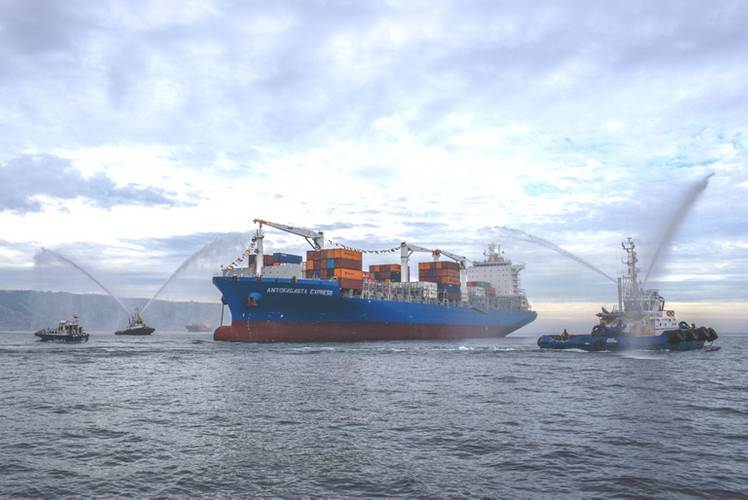Last month, the second of the two ships recently purchased from the Dutch shipping company NileDutch officially changed hands. The 222-meter-long and 35-meter-wide vessel will now sail for Hapag-Lloyd as the Antofagasta Express under the Chilean flag.
The new ship, with a capacity of 3,500 TEU, was rechristened by Hapag-Lloyd and takes its new name from the Chilean port city of Antofagasta. Together with the second new acquisition, the San Antonio Express, and two recently chartered vessels of identical construction, the Antofagasta Express will be deployed in the Conosur service, which covers twelve ports, from Guayaquil on the western coast of South America to Rio de Janeiro on the eastern coast of the continent.
As wide-beam ships, the four 224-meter-long new arrivals are especially broad (35 meters), which allows them to simultaneously have a shallow draught and a high transport capacity. This shape makes them excellently suited for South America’s often shallow ports. In addition, each of them are outfitted with 466 reefer plugs, which makes them ideally configured to transport temperature-sensitive foodstuffs.
The state-of-the-art vessels should also help to make the service in the South Atlantic as well as in the South Pacific even better, by transporting goods not only between Chilean ports, but also to undertake these kinds of inland transports within the national boundaries of Argentina, Brazil and Peru. This kind of so-called cabotage transport is normally reserved for domestic companies, but these rights were transferred to Hapag-Lloyd as part of the merger with the container business of CSAV at the end of 2014.














